Effects of Slice Thickness and Hot-air Temperature on Drying Characteristics, Physico-chemical Properties and Antioxidants of Mulusasiatica Nakai Slices
-
摘要: 为探究热风温度和切片厚度对沙果切片干燥特性、物化性质以及抗氧化成分的影响,将厚度为3和5 mm的沙果切片在不同热风温度(60、70、80、90 ℃)进行干燥,采用5种常见食品薄层干燥模型(Newton, Henderson and Pabis, Page, Logarithmic, Two-tern)对实验数据进行非线性拟合,计算扩散系数和活化能,并对干燥后切片的色泽、硬度、复水性能以及抗氧化成分进行分析。结果表明,随着热风温度的升高和切片厚度的减少,干燥时间缩短。在实验的干燥温度范围内,有效扩散系数随着温度的升高而增加。沙果切片厚度分别为3和5 mm时,活化能值分别为17.46和23.82 kJ/mol。应用Fick扩散模型来描述沙果切片的水分蒸发过程,相比于其他模型,Page模型能更好地拟合沙果切片的干燥过程。沙果切片厚度为3 mm,热风干制温度为90 ℃时,干燥后的产品为淡黄色,复水性能较高,硬度较低。从抗氧化成分的保留情况来看,加热损失了约50%的抗坏血酸,但是酚类物质仅仅下降了约35%。综上所述,可选择切片厚度3 mm,热风温度90 ℃进行干制,干制时间为90 min,干燥后的产品色泽为淡黄色,复水性能较高,硬度较低,并且能够更好地保留沙果中的抗氧化成分。Abstract: To study the effects of hot air temperature and slice thickness on the drying characteristics, physicochemical properties and antioxidant components of Mulusasiatica Nakai slices. The Mulusasiatica Nakai slices with thickness of 3 mm and 5 mm were dried in the hot air temperature range of 60, 70, 80, 90 ℃. Five classical food thin layer drying models were used to nonlinear fit the experimental data, and the diffusion coefficient and activation energy were calculated. The color, hardness, rehydration properties and antioxidant components of the dried slices were analyzed. Results showed that, the drying time was obviously shortened with the increase of hot-air temperature and the decrease of slice thickness. In the experimental drying temperature range, the effective diffusion coefficient increased with the increase of temperature. The activation energies were 17.46 kJ/mol and 23.82 kJ/mol when the slice thickness was 3 and 5 mm, respectively. Fick diffusion model was used to describe the evaporation process of Mulusasiatica Nakai slices. Compared with other models, Page model could better fit the drying process of Mulusasiatica Nakai slices. When the slice thickness was 3 mm and the hot-air temperature was 90 ℃, the dried product was light yellow, with high rehydration performance and low hardness. In terms of antioxidant retention, heat lost about 50% of ascorbic acid, but only about 35% of total phenolics. In conclusion, the slice thickness could be selected to be 3mm, the hot air temperature 90 ℃ for drying, drying time 90 min, dried product color was light yellow, higher rehydration performance, lower hardness, and could better retain the antioxidant components in Mulusasiatica Nakai.
-
沙果(Mulusasiatica Nakai)属蔷薇科,仁果亚科,苹果属植物,又名花红果、文林果、林擒、萘子等[1]。沙果栽培历史悠久,在我国西北、华北、东北以及长江以南各省均有种植[2]。沙果富含丰富的维生素、矿物质、有机酸等,其抗氧化因子较其他水果更为突出,含有多种酚类及黄酮类化合物[3]。新鲜的沙果果实硬度较高,具有强烈的酸味和涩味,因此不太适合鲜食,且零售价格较低,但却是加工果酱、果汁、果干等产品的良好原料。
热风干制技术是果蔬脱水加工中应用最广泛的技术之一,因为它可以通过降低水分活度、抑制微生物生长和防止某些生化反应来延长干燥产品的保质期[4]。此外,热风干燥脱水技术的设备成本不高,温度可稳定控制,产品质量也较为统一[4]。通常,干制果蔬产品被认为营养价值低于其相应的新鲜果蔬,这主要是由于干燥过程中热敏性维生素物质等活性成分的降解和损失[5]。Mrad等[6]报道,热风干燥后梨片的抗坏血酸和总酚含量较低。Korus[7]发现,不同干燥处理羽衣甘蓝叶片中抗坏血酸和总酚的含量均低于新鲜样品。因此,为了缩短干制时间,提高产品质量,减少能源消耗,尽可能保持产品的营养成分,可将果蔬物料切片后再脱水干制处理[8]。
此外,果蔬干燥脱水过程中水分蒸发速度的快慢直接影响产品的质量,如色泽、硬度以及复水性能等[9]。因此,研究果蔬干燥脱水过程中物料水分的变化过程是必要的,许多研究者采用数学模型来研究果蔬干燥过程中水分的变化规律,将其为实际脱水生产提供更多的数据支持。目前,已有学者对菠萝切片[10]、苹果切片[11]、梨切片[12]、香蕉切片[13]、百合切片[14]、黑枣切片[15]、山楂切片[16]等果蔬物料切片进行热风干燥特性和动力学模型研究,而关于沙果切片热风干制特性的研究鲜见报道。因此,本研究主要分析热风干燥温度和切片厚度对沙果切片的干燥特性的影响,计算不同干燥条件(切片厚度和热风温度)对沙果在干燥过程中的有效扩散系数和活化能,分析干燥后产品的色泽、硬度、复水性能以及抗氧化成分的变化,为沙果干制品的制备提供必要的数据和理论支撑。
1. 材料与方法
1.1 材料与仪器
沙果 采自黑龙江省齐齐哈尔市长丰农场。选择颜色一致、大小均匀、无病虫害、无机械损伤的沙果作为原料;福林酚、没食子酸、芦丁 上海源叶生物科技有限公司;氢氧化钠、碳酸钠、亚硝酸钠、三氯化铝 AR纯,天津市津东天正精细化学试剂厂;2,6-二氯酚靛酚酸钠、三氯乙酸 天津市凯通化学试剂有限公司;抗坏血酸 分析纯,上海麦克林生物科技股份有限公司。
DHG-9053A电热恒温鼓风干燥箱 上海晶弘实验设备有限公司;TDZ5-WS离心机、ATY124电子天平(精度0.001 g)、SB-1100水浴锅、N-1100旋转蒸发仪 上海爱朗仪器有限公司;CR-10 Plus色度计 柯尼卡美能达光学有限公司;UV-5100紫外分光光度计 上海元析仪器有限公司;GY-3型硬度计 精度0.1 kg/cm2,量程1~24 kg/cm2,浙江托普仪器有限公司;CR-10 Plus色度计 上海柯尼卡美能达光学有限公司。
1.2 实验方法
1.2.1 沙果切片干制
沙果经清洗沥干,并手动去核,然后利用水果切片机切成3和5 mm的切片。沙果切片干制实验采用电热恒温鼓风干燥箱。干燥温度分别在60、70、80和90 ℃下进行。干燥室内的恒定风速为1.0 m/s。在进行干燥实验开始前2 h将电热恒温鼓风干燥箱调到设定温度[6]。
然后,将不同厚度沙果切片(200±1.00 g)铺在铁丝网上,确保每片都是单层,不重叠,置于已经恒定温度的热风干燥箱内,每隔10 min测量,记录一次质量变化。当连续3次测定后样品的质量不变时,认定干燥结束。
1.2.2 水分比率和干制速率计算
水分比(moisture ratio,MR)代表样品的绝对含水率。沙果切片在不同干燥条件下的MR用以下公式(1)计算[6]:
MR=M−MeM0−Me (1) 其中,M和M0分别是产品在任何干燥时间和初始时间的干基水分含量;Me是平衡水分含量。与M或M0相比,Me的值相对较小,可以忽略不计。因此,这些方程可以简化为MR=M/M0。
沙果的干燥速率(drying rate,DR)按公式(2)计算[6]:
DR=Mt+dt−Mtdt (2) 其中,Mt和Mt+dt分别是沙果切片在时间t的干基水分含量(g water/g dry matter)和时间t+dt的含水量;t是时间(min);dt是时间差(min)。
1.2.3 最优模型选择
为了选择一个合适的数学模型来描述沙果片的干燥过程,本研究采用理论模型-扩散模型的5个经典薄层干燥模型方程来表示沙果片的干燥曲线,如表1所示。
表 1 沙果切片薄层干制数学模型Table 1. Thin-layer drying models used for mathematical of drying of Mulusasiatica Nakai slices本研究采用Origin Pro8.5数理统计软件对线性和非线性回归方程进行分析,得出各种统计参数,如决定系数(R2)和卡方(χ2)。最好的描述物料薄层干制模型的统计分析参数是R2最大,并且χ2最小[6]。
1.2.4 有效扩散系数的计算
干燥食品在降速干燥阶段的干燥特性一般由Fick扩散方程公式(3)计算。在1975年,Crank用方程公式(4)表示[17]:
∂M∂t=∇[Deff(∇M)] (3) MR=8π2∑∞n=01(2n+1)2exp((2n+1)2π2Defft4L20) (4) 其中,Deff是有效水分扩散系数,m2/s;L0表示沙果切片的一半厚度;n是一个正整数。
对于干燥时间较长的干燥过程,公式(4)可以直接简化为公式(5)[14]:
MR=8π2exp(−π2Defft4L20) (5) 将计算得出的MR值,以干燥时间t为横坐标,ln(MR)为纵坐标系,组成直线方程公式(6)。
lnMR=ln8π2−π2Defft4L20 (6) 上述直线方程的斜率如公式(7)。
Slope=π2Deff4L20 (7) 1.2.5 活化能的计算
用Arrhenius方程表示水的扩散系数和温度的关系。该方程如公式(8)所示[14]:
Deff=D0exp(−EaRT) (8) 其中,D0代表阿伦纽斯方程中的实验因子(m2/s);Ea代表活化能(kJ/mol);R是气体常数8.314 J/(mol·K);T代表绝对温度(K)。
活化能计算是将Deff的自然对数与干制绝对温度的倒数做一条直线,计算此直线的斜率,然后就可得到活化能,计算公式如公式(9)、公式(10)[14]:
lnDeff=lnD0−EaR⋅1T (9) Slope=−EaR (10) 1.2.6 色泽测定
干制后的切片色泽由色度计测定。利用亮度(L*)、红色(a*)和黄色(b*)对沙果干片的颜色进行表征[18]。色泽测量数据以3片果片样品测量值的均值表示。
1.2.7 硬度测定
采用水果硬度计测定。探头使干制沙果切片破碎的力被记录,单位(N)。此值越大,说明沙果切片硬度越大,脆性越差[18]。
1.2.8 复水率测定
取5.0 g沙果切片干样于100 mL三角瓶中,加入100 mL蒸馏水,浸泡30 min,取出沥干水分后称重[19]。
复水率(%)=[(复水后样重−干样重)/干样重]×100 (11) 1.2.9 抗氧化成分含量测定
抗坏血酸含量的测定采用2,6-二氯苯酚-滴定法测定,含量分析样品的提取按Wang等[18]所述制备,结果以mg/100 g DW表示。以没食子酸为标准,采用Folin-Ciocalteu法测定总酚含量,按Wang等[18]所述制备用于总酚含量分析的样品萃取并测定。结果表示以没食子酸当量(Gallic acid equivalent,GAE)毫克每克干重(mg GAE/g DW)表示。
总黄酮含量采用比色法测定,用于含量分析的样品提取方法如Wang等[18]所述制备用于总黄酮含量分析的样品萃取并测定。结果以芦丁当量(Rutin equivalent,RE)毫克每克干重表示(mg RE/g DW)。
1.3 数据处理
所有实验重复三次,应用SPSS 11.5软件对所有数据进行方差分析,并进行Duncans’差异显著性分析,P<0.05表示差异显著,P<0.01表示差异极显著。
2. 结果与分析
2.1 干燥特性
图1显示了沙果切片在不同厚度和温度下的MR和干燥时间之间的关系。随着干燥时间的延长,MR持续下降。在60、70、80和90 ℃温度下,切片厚度为3 mm的沙果切片的干基含水率不再发生变化时,所需的时间分别为180、140、110和100 min。此外,5 mm厚度的沙果切片消耗的干燥时间更长,对应温度分别为280、200、150和140min。在干燥温度相同时,随着沙果切片厚度的增加,干燥时间延长。这是因为切片厚度增大,水分蒸发时由内到外的距离增大,并且在相同载荷时的样品表面积减少,导致干制时间延长[20]。Antonio等[21]发现,苹果切片在热风40 ℃时干燥时间最长,在80 ℃时耗时最短。
2.2 干燥速率曲线
图2显示了不同干燥温度(60、70、80和90 ℃)下3 mm(图2a)和5 mm(图2b)的沙果片的干燥速率曲线。沙果切片初始干基含水率为4.5 kg water/(kg DW)。在干燥初期,沙果切片经历了短暂的干制速率上升期就迅速转入下降期,没有出现恒速干燥过程。随着热风干燥温度增加,干燥时间也明显缩短。这是由于在较高的温度下,水果片和周围环境之间的蒸汽压力有显著差异[18],水分从样品内部向外部迁移的速度逐渐下降[22]。在热风干燥杏片时,干制温度升高可加速杏片中水分转移速率,从而缩短干燥时间[23]。在干燥过程的后期,在相同的切片厚度下,切片内的含水量越低,干燥速率越小,排除切片中的水分更加困难。
2.3 干燥模型
沙果切片不同的薄层干燥模型的统计结果(R2和χ2)见表2。从表2可以看出,所有干燥模型的R2和χ2值分别在0.9703~0.9988、0.00012~0.00335之间。从Page方程中得到的R2值高于其他模型的值。所有模型的R2值都大于0.96,这表明拟合效果很好。从表2来看,Page方程模型中的R2和χ2值分别为最大值和最小值。因此,可以认为Page模型可以很好地拟合沙果切片的薄层干燥过程。干燥温度为90 ℃,切片厚度为3 mm热风干燥Page模型的具体参数如下:k=0.0059,n=1.4613,R2=0.9984。图3对比了沙果切片厚度3和5 mm,干制温度为60,70,80,90 ℃时,由Page方程预测和实验数据的MR,可以看出预测的MR曲线和实验的MR之间是非常吻合的。
表 2 不同薄层干制模型所模拟的统计结果Table 2. Statistical results obtained from various thin layer drying models模型名称 切片厚度(mm) 干制温度(℃) R2 χ2 Page 3 60 0.9983 0.00018 70 0.9979 0.00021 80 0.9987 0.00014 90 0.9984 0.00019 5 60 0.9987 0.00013 70 0.9984 0.00017 80 0.9987 0.00013 90 0.9988 0.00012 Two-term 3 60 0.9799 0.00205 70 0.9762 0.00253 80 0.9866 0.00144 90 0.9743 0.00284 5 60 0.9799 0.00205 70 0.9762 0.00253 80 0.9866 0.00144 90 0.9743 0.00284 Newton 3 60 0.9703 0.00327 70 0.9791 0.00215 80 0.9745 0.00294 90 0.9719 0.00335 5 60 0.9734 0.00271 70 0.9713 0.00306 80 0.9718 0.00303 90 0.9717 0.00312 Logarithmic 3 60 0.9884 0.00128 70 0.9882 0.00122 80 0.9859 0.00162 90 0.9854 0.00174 5 60 0.9929 0.00072 70 0.9903 0.00103 80 0.9935 0.00137 90 0.9875 0.00138 Handerson and Pabis 3 60 0.9985 0.00016 70 0.9979 0.00021 80 0.9981 0.00014 90 0.9984 0.00018 5 60 0.9980 0.00013 70 0.9986 0.00014 80 0.9981 0.00015 90 0.9982 0.00013 2.4 有效扩散系数的计算
有效水分扩散系数(Deff)通常被看作是干燥流体动力传质的一个指标。一般来说,食品的有效扩散系数为10−12~10−8[24]。沙果切片干燥时Deff受温度和切片厚度的影响具体结果见表3。从表3可知,水分有效扩散系数值随着干燥温度的升高而增加。此外,在恒定的干燥温度下,Deff值随切片厚度而减小。在60~90 ℃的干燥过程中,沙果的水分有效扩散系数为0.6142×10−9~19.867×10−9 m2/s。Antonio等[21]的研究表明,干燥切片厚度为5 mm的苹果切片时有效扩散系数为15.30×10−9 m2/s,与此值比较接近。Wang等[18]对不同切片厚度的枣片的干燥动力学的研究也发现,在相同的干燥温度条件下,切片厚度越小,水分有效扩散系数也越大。这是因为在切片厚度较小的样品,水分扩散通道更短,水分更容易迁移,得到的Deff值更大[25]。
表 3 沙果切片在不同干制温度和切片厚度下的有效扩散系数Table 3. Values of effective diffusivity attained at various air temperatures on hot-air drying of Mulusasiatica Nakai slices with different thickness干制温度(℃) 有效扩散系数(m2/s)×10−9 切片厚度(3 mm) 切片厚度(5 mm) 60 0.99±0.12c 0.61±0.05d 70 1.41±0.27b 0.76±0.12c 80 1.90±0.18a 0.83±0.17b 90 1.98±0.34a 1.08±0.08a 注:同列不同小写字母表示差异显著,P<0.05。 2.5 活化能的计算
干燥活化能表示在干燥过程中,单位摩尔的水分从液态转化为气态所需的最小能量。当样品的活化能越大,干燥的难度就越大[26]。所有样品的活化能在10~110 kJ/mol之间[27]。由图4可知,ln(Deff)是线性的,与绝对温度倒数成正比关系,可根据公式10可计算出沙果切片在厚度为3 mm和5 mm时的活化能分别为17.46和23.82 kJ/mol。沙果切片热风干制所需的活化能与嘎拉苹果(19.20~27.10 kJ/mol)[28]接近,高于草莓切片(4.95 kJ/mol)[29],而低于南瓜切片(78.90 kJ/mol)[19]。
2.6 切片厚度和干制温度对沙果切片色泽的影响
产品的色泽是影响产品感官品质的一个非常重要的因素,同时也极大地影响着消费者的购买欲望[30]。表4显示了沙果切片在不同干制温度条件下的色泽参数L*、a*、b*。热风干燥温度和切片厚度对沙果切片的颜色变化有显著影响(P<0.05)。新鲜沙果切片L*值为58.78,热风干燥的沙果切片L*值在40.02~50.73之间,较新鲜样品降低了5.09%~17.81%(P<0.01)。新鲜沙果切片的初始a*值为2.46(淡黄色),干燥后切片a*值在3.02~13.16之间变化。干燥温度越低,切片厚度越大时,切片a*值越小,差异显著(P<0.01),但样品仍然为黄色,没有发生明显的褐变。与80 ℃和90 ℃热风条件下干燥相比,热风干燥温度分别为50 ℃和60 ℃时,沙果切片的a值较高。干制果蔬a*值的增加主要由两个因素导致:叶绿素在高温下的降解;酶促褐变或非酶褐变反应,产生褐色成分[31]。伴随干制温度升高,沙果切片的b也逐渐增大。高温(90 ℃)干燥时,b*显著高于低温(60 ℃)(P<0.01)。而在干燥温度相同的情况下,切片厚度对干燥沙果切片的b*无显著影响(P>0.05)。
表 4 干制温度和切片厚度对沙果切片色泽的影响Table 4. Effects of drying temperature and slice thickness on the color of Mulusasiatica Nakai slices色泽指标 切片厚度(mm) 60 ℃ 70 ℃ 80 ℃ 90 ℃ L*值 3 47.3±0.88aA 48.9±0.64aA 40.1±0.51bA 40.6±0.49bB 5 42.8±1.21aB 43.1±0.75aB 40.0±0.40bA 49.1±0.56aA a*值 3 10.7±0.72aB 8.9±0.23bB 4.7±0.27cB 3.7±0.11dB 5 12.9±0.09aA 9.9±0.33bA 6.3±0.49cA 4.4±0.16dA b*值 3 15.0±1.07cB 23.5±1.06bA 26.5±1.51aA 26.8±1.50aA 5 17.1±0.97aA 26.1±1.06bA 27.5±1.61aA 29.1±2.35aA 注:同一行中小写字母不同表示差异显著(P<0.05),同一列中大写字母不同表示差异显著(P<0.05);表5同。 2.7 切片厚度和干制温度对沙果切片硬度的影响
无论是新鲜的沙果还是干制的沙果切片,硬度都是一个重要的理化参数,它是消费者适口性的一个重要指标。切片厚度和干制温度对沙果切片硬度的影响如图5。
![]() 图 5 切片厚度和干制温度对沙果切片硬度的影响注:不同大小写字母表示差异显著,P<0.05;图6同。Figure 5. Effects of slice thickness and hot-air drying temperature on firmness of Mulusasiatica Nakai slice
图 5 切片厚度和干制温度对沙果切片硬度的影响注:不同大小写字母表示差异显著,P<0.05;图6同。Figure 5. Effects of slice thickness and hot-air drying temperature on firmness of Mulusasiatica Nakai slice随着干制温度升高,沙果切片硬度逐渐减小。切片厚度为3 mm时,90 ℃干制的沙果切片的硬度值仅为6.23 N,与60 ℃干制样品相比,下降58.79%(P<0.05)。沙果切片组织硬度的下降可能是因为在高温干制时,水分蒸发速度较快,组织内部形成较为疏松的多孔结构[32]。在干制温度相同时,切片厚度越小,干制后切片的硬度越小。在干制后,切片厚度为3 mm样品的切片硬度约为5 mm样品硬度的50%(P<0.05)。
2.8 切片厚度和干制温度对沙果切片复水性能的影响
干制品的复水性能在一定程度上反映干制品复水后恢复到新鲜状态的程度,是衡量干制品品质的重要指标,一般常用干制品吸水增重的程度来衡量[33]。干制品复水性部分受原料加工处理的影响,部分则因干燥方法而有所不同。此外,复水比可衡量果蔬干片内部的疏松程度,进而影响干片的质地,复水比的数值小,表明干片的疏松程度低,结构紧实[32]。切片厚度和干制温度对沙果复水性能的影响如图6。切片厚度对干制后沙果切片复水性能的影响具有显著性差异。在相同的干制温度时,与切片厚度为5 mm的样品相比,3 mm的沙果切片干制后复水比增加了约2倍(P<0.05),复水性能达到了170%。当沙果切片厚度一定时,随着干制温度升高,干制后沙果切片的复水性能有所升高。与60 ℃干制的样品相比,90 ℃干制后的样品复水性能增加了约50%,差异显著(P<0.05)。这也说明干制温度越高,切片厚度越小。
2.9 抗氧化成分
干燥温度和切片厚度对沙果切片中抗坏血酸含量的影响见表5。新鲜沙果的初始抗坏血酸含量为7.32 mg AA/100 g DW。热风干燥后,沙果切片中抗坏血酸含量降低,在2.08~3.38 mg AA/g DW范围内,损失约50%以上,这主要是由于在高温高氧环境下,抗坏血酸被氧化[18]。当切片厚度相同时,干燥温度越低,抗坏血酸损失越多,90℃干制后,沙果切片中抗坏血酸含量最高。而干燥温度相同时,不同沙果切片厚度得到的样品之间,抗坏血酸的含量差异不显著(P>0.05)。
表 5 不同切片厚度和干制温度对沙果切片抗坏血酸、总酚、总黄酮含量的影响Table 5. Effects of hot-air temperature and slice thickness on ascorbic acid, total phenolics and total flavonids of Mulusasiatica Nakai slices抗氧化成分 切片厚度(mm) 干制温度(℃) 60 70 80 90 抗坏血酸
(mg AA/100 g DW)3 2.48±0.38Ab 2.15±0.22A b 3.13±0.27Aa 3.38±0.26Aa 5 2.15±0.15Bb 2.08±0.31A b 2.85±0.23Ba 3.01±0.28Ba 总酚含量
(mg GAE/g DW)3 14.42±2.24Ab 14.31±1.33Ab 16.42±1.98Aa 17.52±0.71Aa 5 13.24±1.54Ab 14.16±1.42Ab 15.43±1.48Aa 16.24±1.47Aa 总黄酮含量
(mg RE/g DW)3 23.85±1.52A b 22.95±2.19A b 22.71±1.28Ab 25.65±0.93Aa 5 20.55±1.38B b 20.45±1.31Ab 21.25±1.54Ab 24.51±2.16Aa 新鲜沙果中总酚和总黄酮含量分别为26.12 和42.36 mg RE/g DW。热风干燥过程中,沙果切片中总酚含量和总黄酮含量减少约35%,差异显著(P<0.05)。在切片厚度相同时,热风温度越高,干燥的沙果切片中总酚含量和总黄酮含量越高,这说明在高温短时加热条件下,抗氧化成分损失较小,陈佳妮等[22]在研究杏切片时也发现,高温短时条件下可保留更多的抗氧化成分。
3. 结论
沙果属于高产水果,但是由于其口感较为酸涩,更适于加工后作为休闲零食。本研究表明,将沙果切片后进行热风干制,可选择较高的温度(90 ℃)进行干制,切片厚度为3 mm的干燥工艺,干燥时间为90 min,且干燥后的产品色泽为淡黄色,复水性能达到了170%,硬度较小。从抗氧化成分的保留情况来看,加热损失了约50%的抗坏血酸,同时酚类物质也下降了约35%。建议在今后的研究中,采用其他脱水方式进行干制处理,如联合干燥方式等,阐述干燥过程中水分蒸发的机制,还要考虑干燥对沙果片营养成分、活性成分、风味成分以及沙果片品质的影响,为消费者健康提供更多有益的可选择的果蔬产品。
-
图 5 切片厚度和干制温度对沙果切片硬度的影响
注:不同大小写字母表示差异显著,P<0.05;图6同。
Figure 5. Effects of slice thickness and hot-air drying temperature on firmness of Mulusasiatica Nakai slice
表 1 沙果切片薄层干制数学模型
Table 1 Thin-layer drying models used for mathematical of drying of Mulusasiatica Nakai slices
表 2 不同薄层干制模型所模拟的统计结果
Table 2 Statistical results obtained from various thin layer drying models
模型名称 切片厚度(mm) 干制温度(℃) R2 χ2 Page 3 60 0.9983 0.00018 70 0.9979 0.00021 80 0.9987 0.00014 90 0.9984 0.00019 5 60 0.9987 0.00013 70 0.9984 0.00017 80 0.9987 0.00013 90 0.9988 0.00012 Two-term 3 60 0.9799 0.00205 70 0.9762 0.00253 80 0.9866 0.00144 90 0.9743 0.00284 5 60 0.9799 0.00205 70 0.9762 0.00253 80 0.9866 0.00144 90 0.9743 0.00284 Newton 3 60 0.9703 0.00327 70 0.9791 0.00215 80 0.9745 0.00294 90 0.9719 0.00335 5 60 0.9734 0.00271 70 0.9713 0.00306 80 0.9718 0.00303 90 0.9717 0.00312 Logarithmic 3 60 0.9884 0.00128 70 0.9882 0.00122 80 0.9859 0.00162 90 0.9854 0.00174 5 60 0.9929 0.00072 70 0.9903 0.00103 80 0.9935 0.00137 90 0.9875 0.00138 Handerson and Pabis 3 60 0.9985 0.00016 70 0.9979 0.00021 80 0.9981 0.00014 90 0.9984 0.00018 5 60 0.9980 0.00013 70 0.9986 0.00014 80 0.9981 0.00015 90 0.9982 0.00013 表 3 沙果切片在不同干制温度和切片厚度下的有效扩散系数
Table 3 Values of effective diffusivity attained at various air temperatures on hot-air drying of Mulusasiatica Nakai slices with different thickness
干制温度(℃) 有效扩散系数(m2/s)×10−9 切片厚度(3 mm) 切片厚度(5 mm) 60 0.99±0.12c 0.61±0.05d 70 1.41±0.27b 0.76±0.12c 80 1.90±0.18a 0.83±0.17b 90 1.98±0.34a 1.08±0.08a 注:同列不同小写字母表示差异显著,P<0.05。 表 4 干制温度和切片厚度对沙果切片色泽的影响
Table 4 Effects of drying temperature and slice thickness on the color of Mulusasiatica Nakai slices
色泽指标 切片厚度(mm) 60 ℃ 70 ℃ 80 ℃ 90 ℃ L*值 3 47.3±0.88aA 48.9±0.64aA 40.1±0.51bA 40.6±0.49bB 5 42.8±1.21aB 43.1±0.75aB 40.0±0.40bA 49.1±0.56aA a*值 3 10.7±0.72aB 8.9±0.23bB 4.7±0.27cB 3.7±0.11dB 5 12.9±0.09aA 9.9±0.33bA 6.3±0.49cA 4.4±0.16dA b*值 3 15.0±1.07cB 23.5±1.06bA 26.5±1.51aA 26.8±1.50aA 5 17.1±0.97aA 26.1±1.06bA 27.5±1.61aA 29.1±2.35aA 注:同一行中小写字母不同表示差异显著(P<0.05),同一列中大写字母不同表示差异显著(P<0.05);表5同。 表 5 不同切片厚度和干制温度对沙果切片抗坏血酸、总酚、总黄酮含量的影响
Table 5 Effects of hot-air temperature and slice thickness on ascorbic acid, total phenolics and total flavonids of Mulusasiatica Nakai slices
抗氧化成分 切片厚度(mm) 干制温度(℃) 60 70 80 90 抗坏血酸
(mg AA/100 g DW)3 2.48±0.38Ab 2.15±0.22A b 3.13±0.27Aa 3.38±0.26Aa 5 2.15±0.15Bb 2.08±0.31A b 2.85±0.23Ba 3.01±0.28Ba 总酚含量
(mg GAE/g DW)3 14.42±2.24Ab 14.31±1.33Ab 16.42±1.98Aa 17.52±0.71Aa 5 13.24±1.54Ab 14.16±1.42Ab 15.43±1.48Aa 16.24±1.47Aa 总黄酮含量
(mg RE/g DW)3 23.85±1.52A b 22.95±2.19A b 22.71±1.28Ab 25.65±0.93Aa 5 20.55±1.38B b 20.45±1.31Ab 21.25±1.54Ab 24.51±2.16Aa -
[1] 于斌, 陈娟, 张世鹏, 等. 沙果果酒发酵工艺优化及抗氧化活性的研究[J]. 中国酿造,2020,39(1):142−145. [YU B, CHEN J, ZHANG S P, et al. Fermentation process optimization and antioxidant property of crab apple wine[J]. China Brew,2020,39(1):142−145.] YU B, CHEN J, ZHANG S P, et al. Fermentation process optimization and antioxidant property of crab apple wine[J]. China Brew, 2020, 39(1): 142−145.
[2] 李华, 赵进红, 张继亮, 等. 不同品种沙果果实品质评价[J]. 林业科技开发,2012,26(6):36−39. [LI H, ZHAO J H, ZHANG J L, et al. An analysis and evaluation on fruit quality in different varieties of Mulusasiatica Nakai[J]. Journal of Forestry Engineering,2012,26(6):36−39.] LI H, ZHAO J H, ZHANG J L, et al. An analysis and evaluation on fruit quality in different varieties of Mulusasiatica Nakai[J]. Journal of Forestry Engineering, 2012, 26(6): 36−39.
[3] DADWAL V, AGRAWAL H, SONKHLA K, et al. Characterization of phenolics, amino acids, fatty acids and antioxidant activity in pulp and seeds of high-altitude himalayan crabapple fruits (Malusbaccata)[J]. Journal of Food Science and Technology,2018,55(6):2160−2169. doi: 10.1007/s13197-018-3133-y
[4] 杨丽. 果蔬干制研究进展[J]. 食品工业,2012,33(5):99−102. [YANG L. Research on the progress of fruits and vegetables dehydrated[J]. The Food Industry,2012,33(5):99−102.] YANG L. Research on the progress of fruits and vegetables dehydrated[J]. The Food Industry, 2012, 33(5): 99−102.
[5] 王浩, 张明, 王兆升, 等. 干制技术对果蔬干制品品质的影响研究进展[J]. 中国果菜,2018,38(11):15−20. [WANG H, ZHANG M, WANG Z S, et al. Research progress on the effect of drying technology on the quality of dry fruit and vegetable products[J]. China Fruit & Vegetable,2018,38(11):15−20.] WANG H, ZHANG M, WANG Z S, et al. Research progress on the effect of drying technology on the quality of dry fruit and vegetable products[J]. China Fruit & Vegetable, 2018, 38(11): 15−20.
[6] MRAD N D, BOUDHRIOUA N, KECHAOU N, et al. Influence of air drying temperature on kinetics, physicochemical properties, total phenolic content and ascorbic acid of pears[J]. Food and Bioproducts Processing,2012,90:433−441. doi: 10.1016/j.fbp.2011.11.009
[7] KORUS A. Effect of preliminary processing, method of drying and storage temperature on the level of antioxidants in kale (Brassica oleracea L. var. acephala) leaves[J]. LWT-Food Science and Technology,2011,44:1711−1716. doi: 10.1016/j.lwt.2011.03.014
[8] ERBAY Z, ICIER F. A review of thin layer drying of foods:Theory, modeling, and experimental results[J]. Crit Rev Food Sci Nutr,2010,50(5):441−464. doi: 10.1080/10408390802437063
[9] TOPUZ A, FENG H, KUSHAD M. The effect of drying method and storage on color characteristics of paprika[J]. LWT-Food Science and Technology,2009,42:1667−1673. doi: 10.1016/j.lwt.2009.05.014
[10] BISWAS R, HOSSAIN MA, ZAMAN W. Thin layer modeling of drying kinetics, rehydration kinetics and color changes of osmotic pre-treated pineapple (Ananascomosus) slices during drying:Development of a mechanistic model for mass transfer[J]. Innovative Food Science & Emerging Technologies,2022,80:103094.
[11] KAYA A, AYDIN O, DEMIRTAS C. Drying kinetics of red delicious apple[J]. Biosystems Engineering,2007,96:517−524. doi: 10.1016/j.biosystemseng.2006.12.009
[12] DOYMAZ I, ISMAIL O. Experimental characterization and modelling of drying of pear slices[J]. Food Science and Biotechnology,2012,21(5):1377−1381. doi: 10.1007/s10068-012-0181-3
[13] 王艺曼, 刘寅, 孟照峰, 等. 香蕉片高压电场-热泵联合干燥特性与动力学研究[J]. 食品工业科技,2022,43(10):261−270. [WANG Y M, LIU Y, MENG Z F, et al. Drying characteristics and kinetics of electrohydrodynamics-heat pump of banana slices[J]. Science and Technology of Food Industry,2022,43(10):261−270.] WANG Y M, LIU Y, MENG Z F, et al. Drying characteristics and kinetics of electrohydrodynamics-heat pump of banana slices[J]. Science and Technology of Food Industry, 2022, 43(10): 261−270.
[14] WANG C T, LU Y, AN X Z, et al. Thin-layer drying characteristics of Easter lily (Lilium longiflorum Thunb.) scales and mathematical modeling. Food Science and Technology, 2022, 42:e23222.
[15] 彭雪, 赵丽娇, 雷小青, 等. 恒温和分段式降温热风干制技术对黑枣干制特性及品质的影响[J]. 食品工业科技,2021,42(19):92−96. [PENG X, ZHAO L J, LEI X Q, et al. Effects on the drying characteristics and quality of diospyros lotus L. by the technology of thermostatic and subsection temperature-changing hot air drying[J]. Science and Technology of Food Industry,2021,42(19):92−96.] PENG X, ZHAO L J, LEI X Q, et al. Effects on the drying characteristics and quality of diospyros lotus L. by the technology of thermostatic and subsection temperature-changing hot air drying[J]. Science and Technology of Food Industry, 2021, 42(19): 92−96.
[16] 王存堂, 张雄峰, 杨丽, 等. 干制温度和切片厚度对山楂切片热风干制动力学的影响[J]. 食品工业科技,2016,37(13):131−136. [WANG C T, ZHANG X F, YANG L, et al. Effect of temperature and slice thickness on drying kinetics of hot-air drying of hawthorn slices[J]. Science and Technology of Food Industry,2016,37(13):131−136.] WANG C T, ZHANG X F, YANG L, et al. Effect of temperature and slice thickness on drying kinetics of hot-air drying of hawthorn slices[J]. Science and Technology of Food Industry, 2016, 37(13): 131−136.
[17] CRANK J. The mathematics of diffusion[M]. Oxford:Claren-don Press,1975.
[18] WANG C T, TIAN S X, AN X Z et al. The effects of drying parameters on drying characteristics, colorimetric differences, antioxidant components of sliced Chinese jujube[J]. Heat and Mass Transfer,2022,58(9):1561−1571. doi: 10.1007/s00231-022-03202-5
[19] DOYMAZ I. Convective drying kinetics of strawberry[J]. Chemical Engineering and Processing,2008,47:914−919. doi: 10.1016/j.cep.2007.02.003
[20] PINHEIRO M N C, MADALENO R O, CASTRO L M M N. Drying kinetics of two fruits Portuguese cultivars (Bravo de Esmolfe apple and Madeira banana):An experimental study[J]. Heliyon,2022,8(4):e09341. doi: 10.1016/j.heliyon.2022.e09341
[21] ANTONIO V G, KONG A H, MARCELO C, et al. Effect of temperature andair velocity on drying kinetics, antioxidant capacity, total phenolic content, colour, texture and microstructure of apple (var. Granny Smith) slices[J]. Food Chemistry,2012,132(1):51−59. doi: 10.1016/j.foodchem.2011.10.029
[22] 陈佳妮, 刘广宇, 葛永辉, 等. 不同分切形状对贵州小黄姜真空冷冻干燥效率及品质的影响[J]. 食品安全质量检测学报,2023,14(1):138−145. [CHEN J N, LIU G Y, GE Y H, et al. Effects of different cutting shapes on the vacuum freeze-drying efficiency and quality of Guizhou Zingiber officinale roscoe vacuum freeze-drying[J]. Journal of Food Safety and Quality,2023,14(1):138−145.] doi: 10.3969/j.issn.2095-0381.2023.1.spaqzljcjs202301018 CHEN J N, LIU G Y, GE Y H, et al. Effects of different cutting shapes on the vacuum freeze-drying efficiency and quality of Guizhou Zingiber officinale roscoe vacuum freeze-drying[J]. Journal of Food Safety and Quality, 2023, 14(1): 138−145. doi: 10.3969/j.issn.2095-0381.2023.1.spaqzljcjs202301018
[23] IGUAL M, GARCÍA-MARTÍNEZ E, MARTÍN-ESPARZA M E, et al. Effect of processing on the drying kinetics and functional value of dried apricot[J]. Food Research International,2011,47:284−290.
[24] JHA A K, SIT N. Drying characteristics and kinetics of colour change and degradation of phytocomponents and antioxidant activity during convective drying of deseeded Terminalia chebula fruit[J]. Journal of Food Measurement and Characterization,2020,14:2067−2077. doi: 10.1007/s11694-020-00454-9
[25] DENG L Z, MUJUMDAR A S, ZHANG Q, et al. Chemical and physical pretreatments of fruits and vegetables:Effects on drying characteristics and quality attributes-a comprehensive review[J]. Critical Reviews in Food Science and Nutrition,2019,59(9):1408−1432. doi: 10.1080/10408398.2017.1409192
[26] RAFIEE S, SHARIFI M, KEYHANI A, et al. Modeling effective moisture diffusivity of orange slice (Thompson Cv.)[J]. International Journal of Food Properties,2010,13(1):32−40. doi: 10.1080/10942910802144345
[27] KRIAA K, NASSAR A F. Study of gala apples (Maluspumila) thin-layer microwave drying:drying kinetics, diffusivity, structure and color[J]. Food Science and Technology,2020,41:483−493.
[28] ABBASPOUR-GILANDEH Y, KAVEH M, JAHANBAKHSHI A. The effect of microwave and convective dryer with ultrasound pre-treatment on drying and quality properties of walnut kernel[J]. Journal of Food Processing and Preservation,2019,43(11):e14178.
[29] DOYMAZ I. The kinetics of forced convective air-drying of pumpkin slices [J]. Journal of Food Engineering, 2007, 79243-248.
[30] TORUBELI S T, SAMUEL R T, GUMUS R H. Drying characteristics and kinetics of okra at different thickness[J]. International Journal of Chemical and Process Engineering Research,2021,8(1):1−10. doi: 10.18488/journal.65.2021.81.1.10
[31] VEGA A, FITO P, ANDRḖS A, et al. Mathematical modeling of hot-air drying kinetics of red bell pepper (var. Lamuyo)[J]. Journal of Food Engineering,2007,79(4):1460−1466. doi: 10.1016/j.jfoodeng.2006.04.028
[32] 王存堂, 姜微波, 曹建康. 热风干制温度对枣片物化性质、抗氧化成分及性能的影响[J]. 食品工业,2013,34(10):36−39. [WANG C T, JIANG W B, CAO J K. Effect of hot-air temperature on physicochemical properties, antioxidants and antioxidant activity of jujube slice[J]. The Food Industry,2013,34(10):36−39.] WANG C T, JIANG W B, CAO J K. Effect of hot-air temperature on physicochemical properties, antioxidants and antioxidant activity of jujube slice[J]. The Food Industry, 2013, 34(10): 36−39.
[33] 李泽珍, 狄建兵, 郝翔. 超声波处理对常压热风干燥香蕉片的影响[J]. 山西农业大学学报(自然科学版),2014,34(4):380−384. [LI Z Z, DI J B, HAO X. Effect of ultrasonic pretreatment on banana slices dried by hot-air[J]. Journal of Shanxi Agricultural University (Natural Science Edition),2014,34(4):380−384.] LI Z Z, DI J B, HAO X. Effect of ultrasonic pretreatment on banana slices dried by hot-air[J]. Journal of Shanxi Agricultural University (Natural Science Edition), 2014, 34(4): 380−384.
-
期刊类型引用(6)
1. 马晓青,孙皓岩,魏宝红,胡淑曼,杨文哲,杨雪. 紫贻贝酶解工艺及抗炎活性研究. 食品科技. 2024(01): 116-120 .  百度学术
百度学术
2. 程钰,胡蓉,李强,蒋蕾,何跃辉,卢静,王淑军. 复合蛋白酶水解菲律宾蛤蜊及产物的生物学活性研究. 食品科技. 2024(06): 134-141 .  百度学术
百度学术
3. 付雪媛,杜芬,孙呈浩,王明丽,王长伟. 蛤蜊肽的制备工艺优化及其增强免疫活性. 食品工业科技. 2023(09): 244-253 .  本站查看
本站查看
4. 沈畅华,杨娟,张远红,曾晓房. 双酶酶解鸽胸肉工艺优化及抗氧化性评价. 食品与机械. 2023(04): 163-169 .  百度学术
百度学术
5. 吴伟东,马诗淳,陈锐,周广平,邓宇. 厌氧角蛋白降解菌KD-1粗酶和商业蛋白酶酶解猪肉的功能与评价. 中国沼气. 2022(02): 47-53 .  百度学术
百度学术
6. 李佳芸,王欣之,韦源青,卞慧敏,刘睿,吴皓. 马氏珍珠贝软体酶法制备降糖肽的工艺优化及肽段分析. 食品工业科技. 2021(22): 202-211 .  本站查看
本站查看
其他类型引用(0)





 下载:
下载:
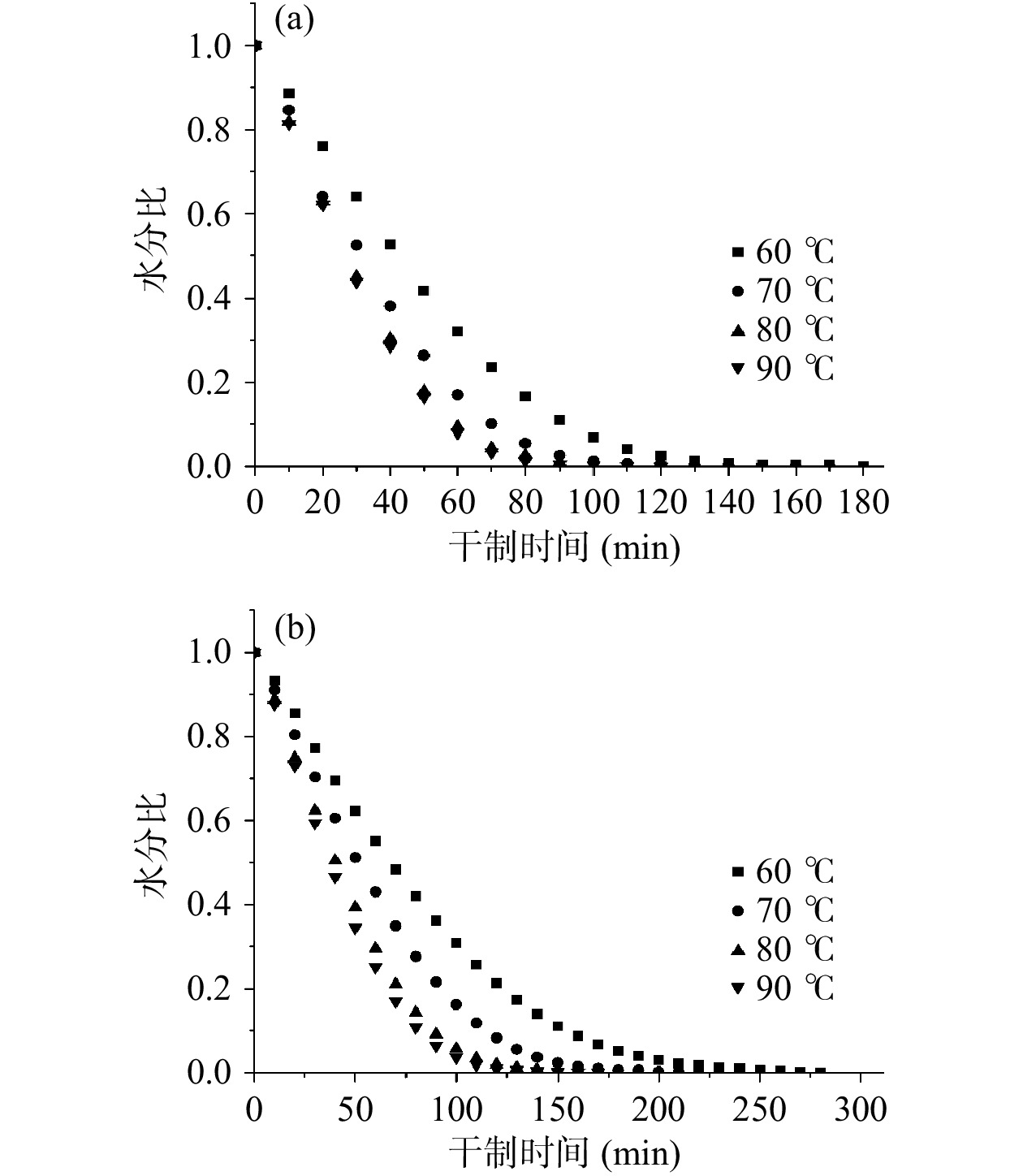
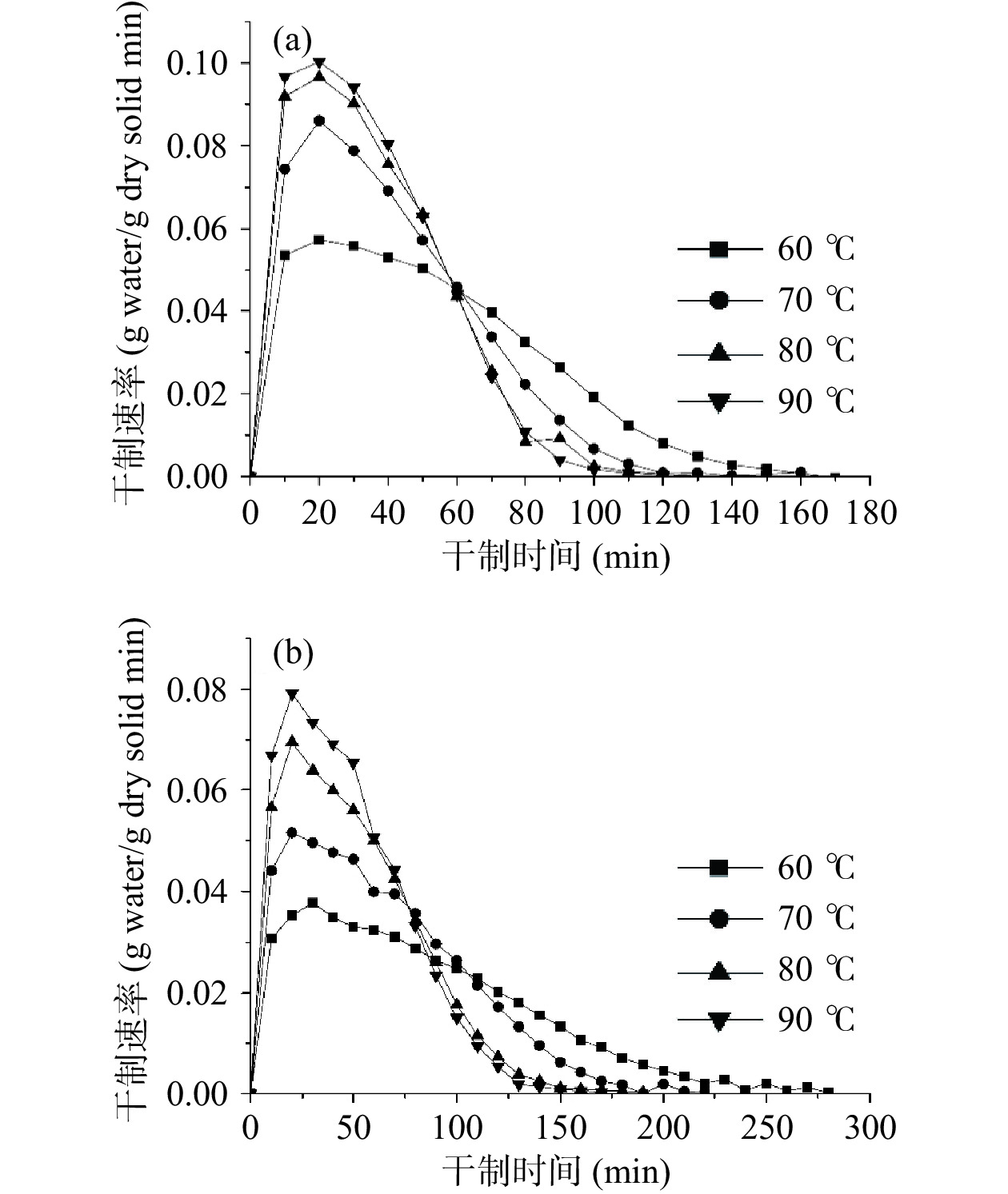
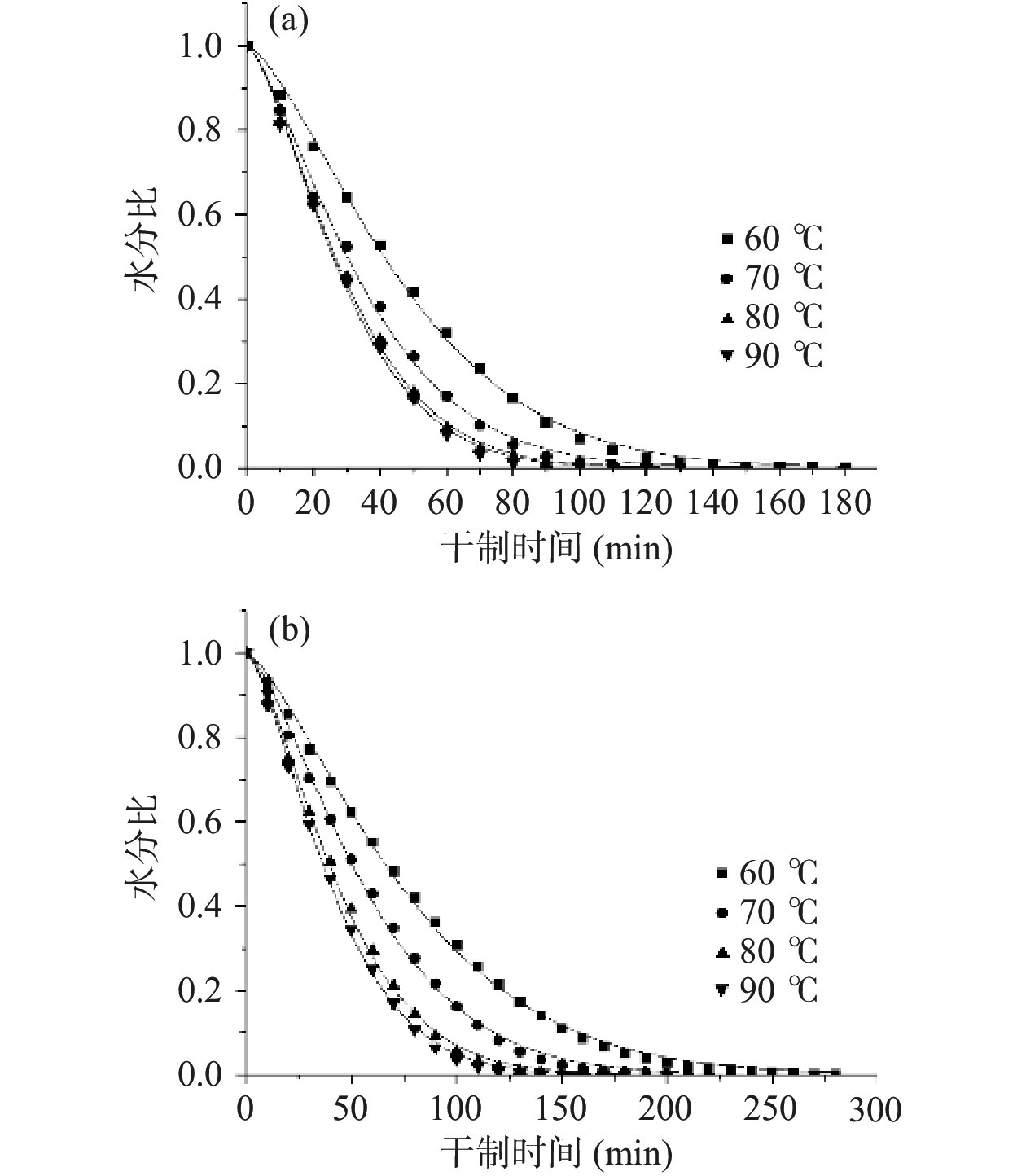
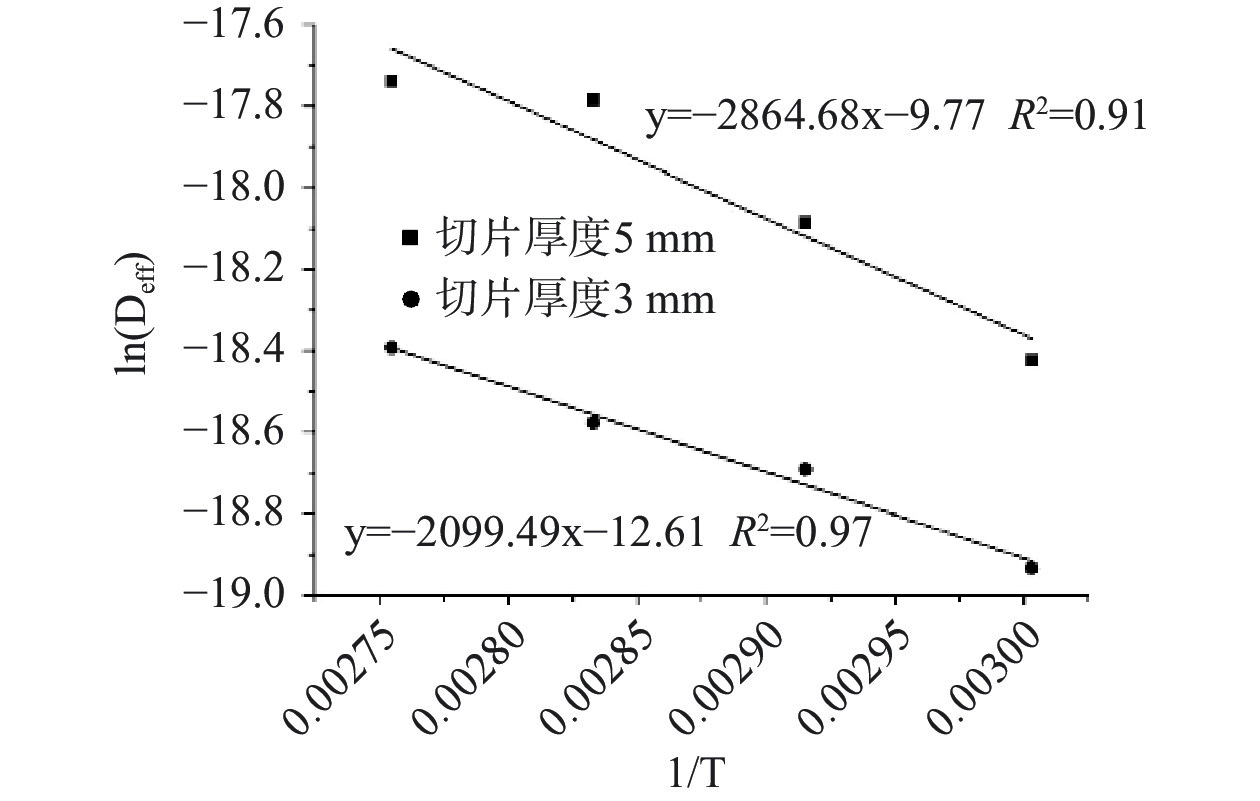
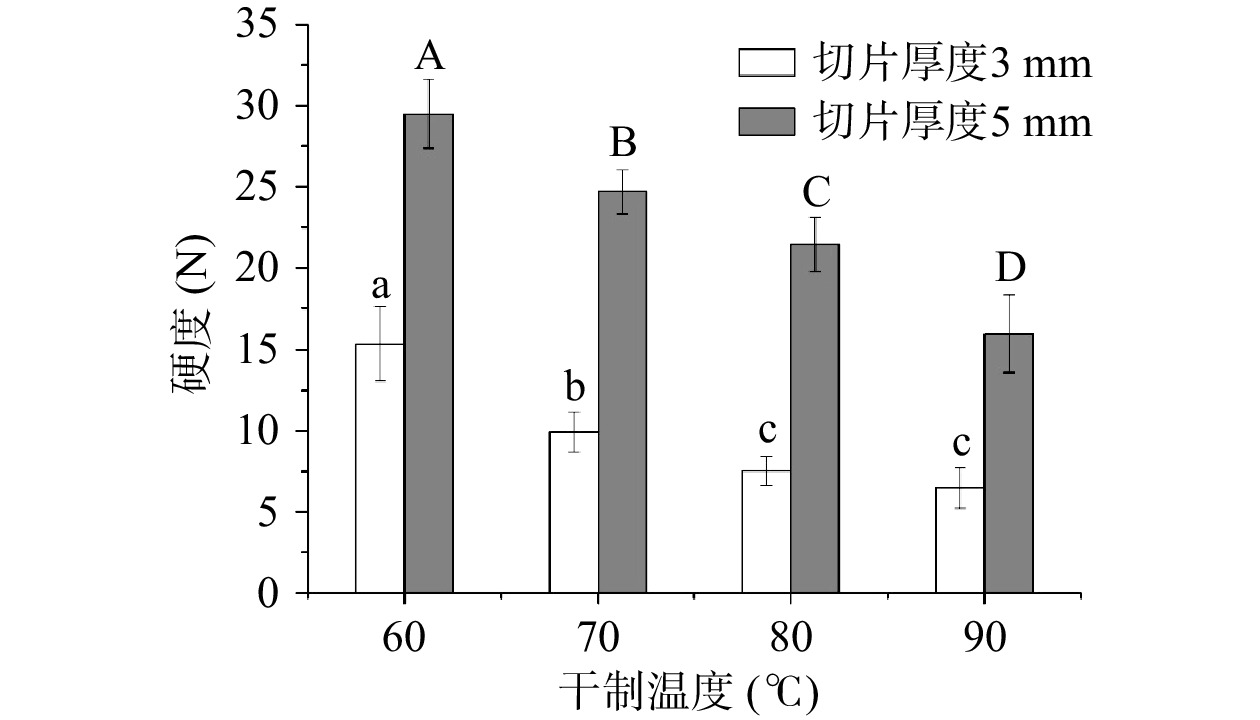
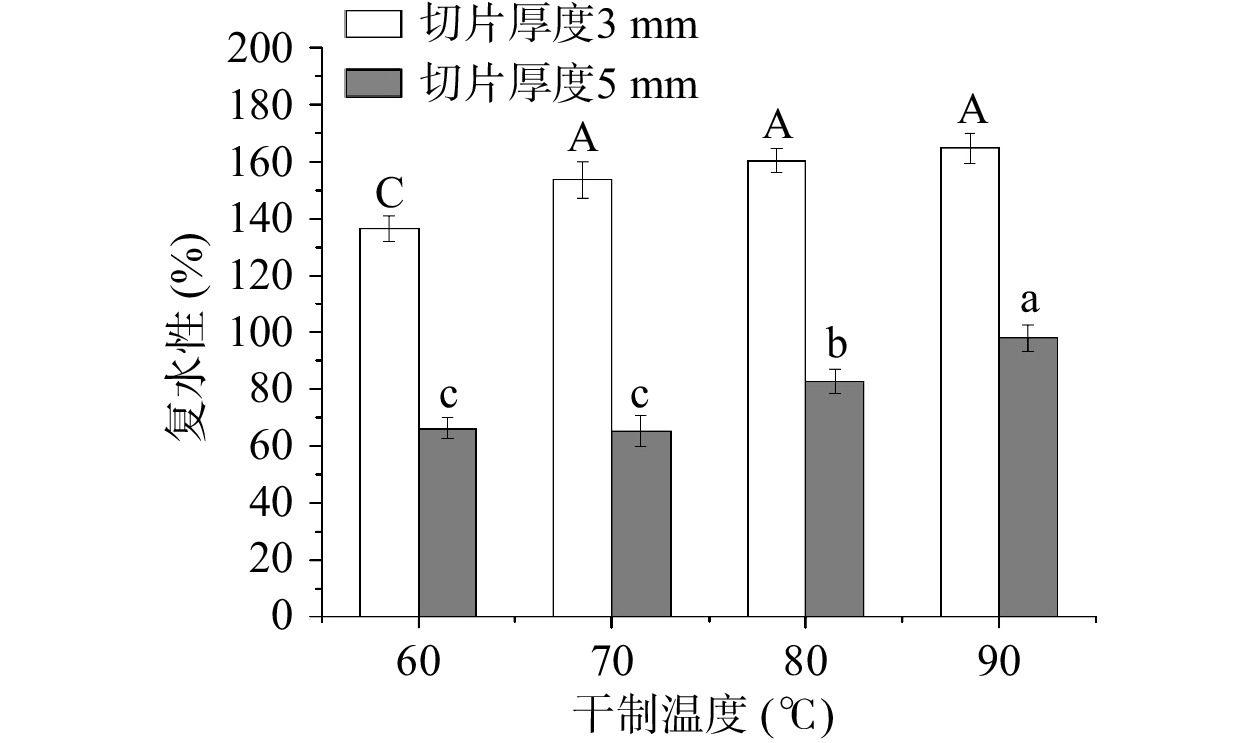
 下载:
下载:
